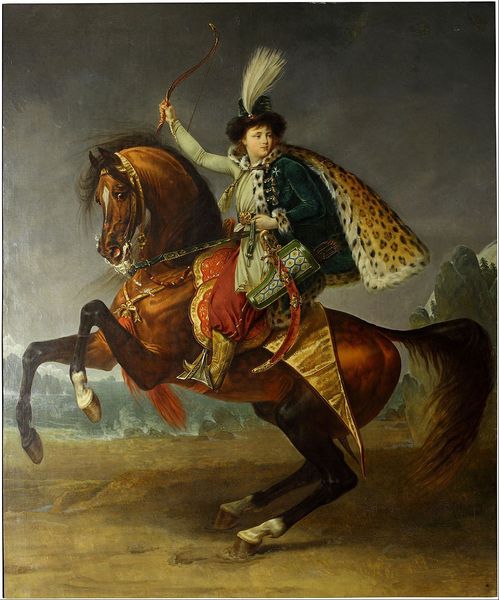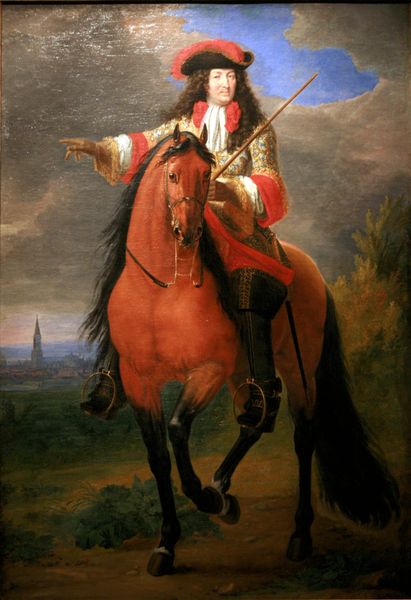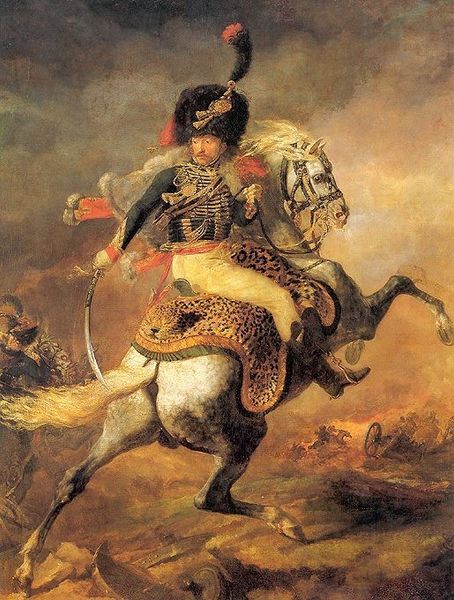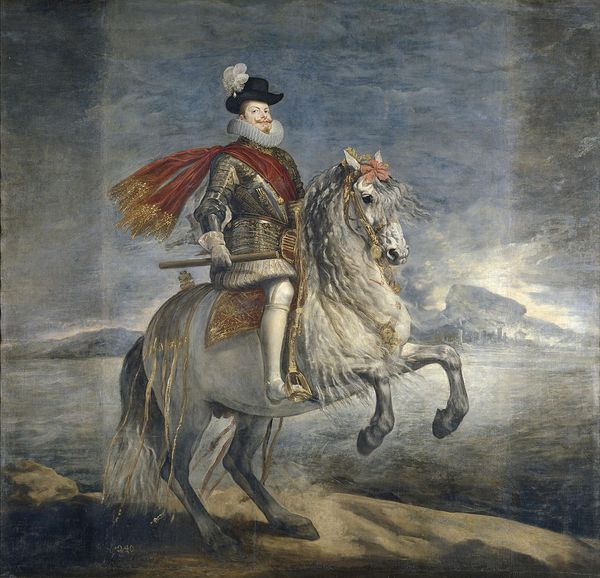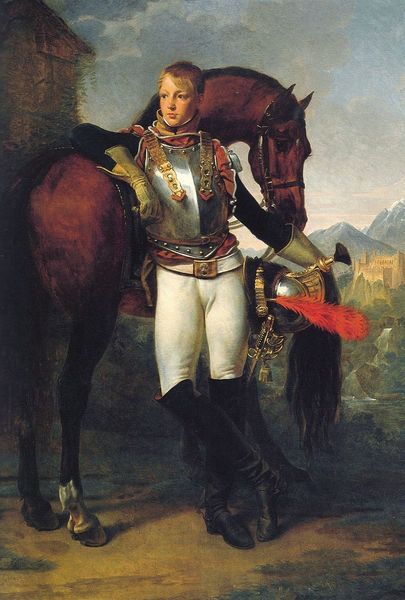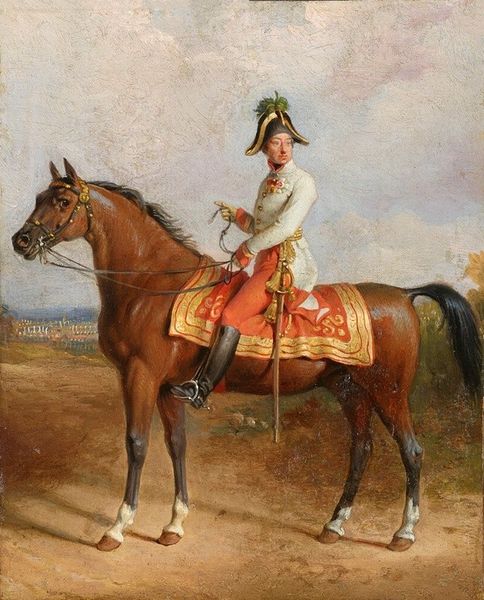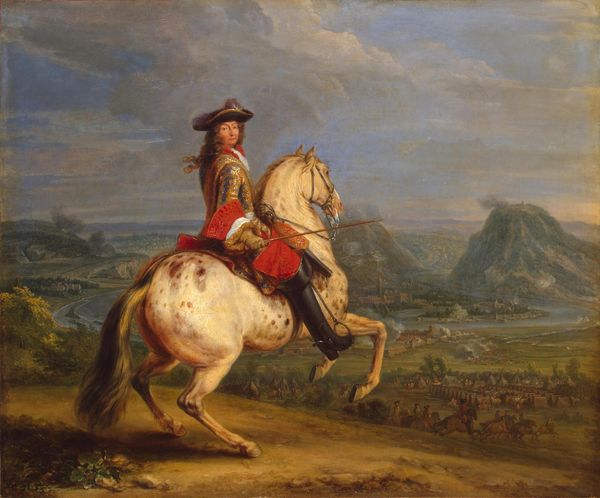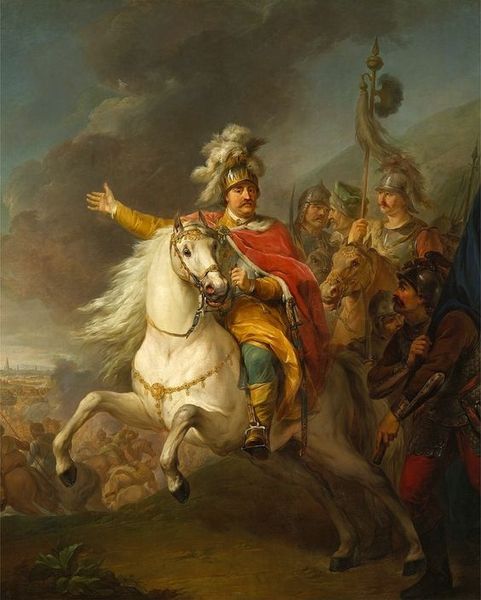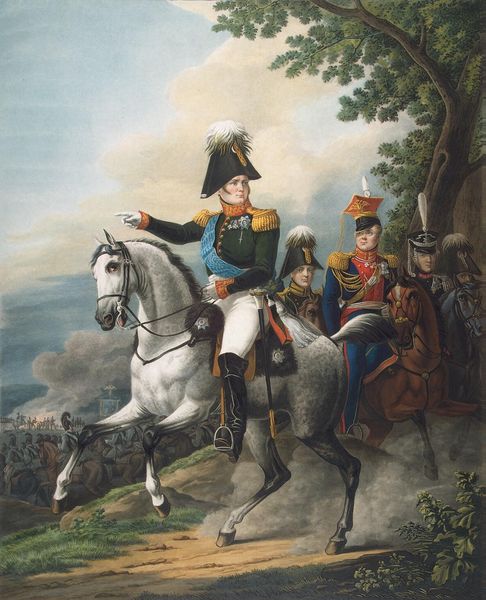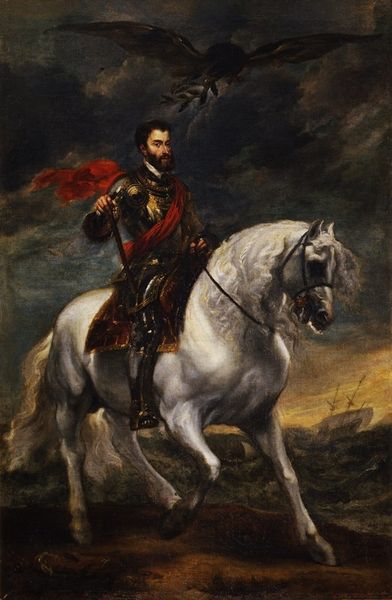
painting, oil-paint
#
portrait
#
neoclassicism
#
painting
#
oil-paint
#
oil painting
#
romanticism
#
animal portrait
#
genre-painting
#
history-painting
#
academic-art
#
portrait art
Copyright: Public domain
Editor: Here we have Antoine-Jean Gros’s *Equestrian Portrait of Jérôme Bonaparte,* painted in 1808. The sheer opulence strikes me – so much gold, so much plumage. What’s your read on this display? Curator: It's certainly a calculated display. Think about the social and political context: Jérôme Bonaparte, Napoleon’s brother, was briefly King of Westphalia. These portraits weren't just about likeness; they were crucial tools for establishing legitimacy and projecting power, especially for a new, somewhat imposed, ruler. The painter knew he needed to convince his patron's audience of something. What would that be? Editor: To make him appear kingly. Imposing? It is hard to separate the clothes from the man himself though, it’s almost like the clothes wear him! Curator: Precisely! And that’s where the "politics of imagery" comes in. Every element, from the embroidered cloak to the horse’s pose, is carefully designed to convey authority. Consider how the institution of monarchy itself relied on this kind of manufactured image. Gros painted him with authority using neoclassicism as a mode of communicating it, like others have done with the earlier rulers from other eras. Editor: It’s interesting how art becomes a form of political propaganda in this way. Are there particular artistic choices in play? Curator: Yes, the dramatic lighting, the idealized landscape, even the restless energy of the horse – it all contributes to the aura of power. However, notice how different it is from earlier royal portraits. There's a touch of Romanticism creeping in, emphasizing individual presence, a slight unease… which underscores the challenge Bonaparte faced in consolidating his rule. Editor: So, beyond just showcasing wealth, it’s actually a carefully constructed argument about legitimacy, playing on artistic styles to emphasize particular messages to a public? Curator: Exactly. This artwork reflects the complex relationship between art, power, and the construction of public image. Editor: This has definitely opened my eyes to the political function of art! It is not *just* about an impressive man riding a horse. Curator: Indeed. Looking at art through the lens of history allows us to decode the messages embedded within, enriching our understanding.
Comments
No comments
Be the first to comment and join the conversation on the ultimate creative platform.
